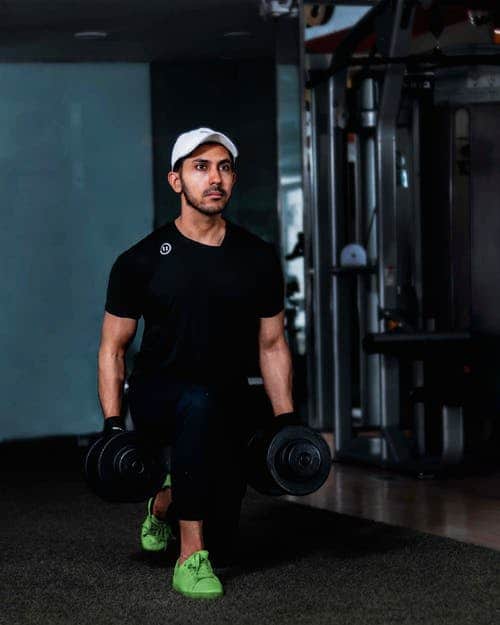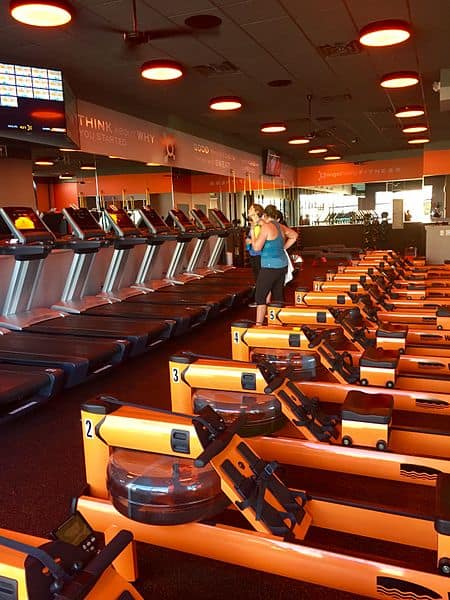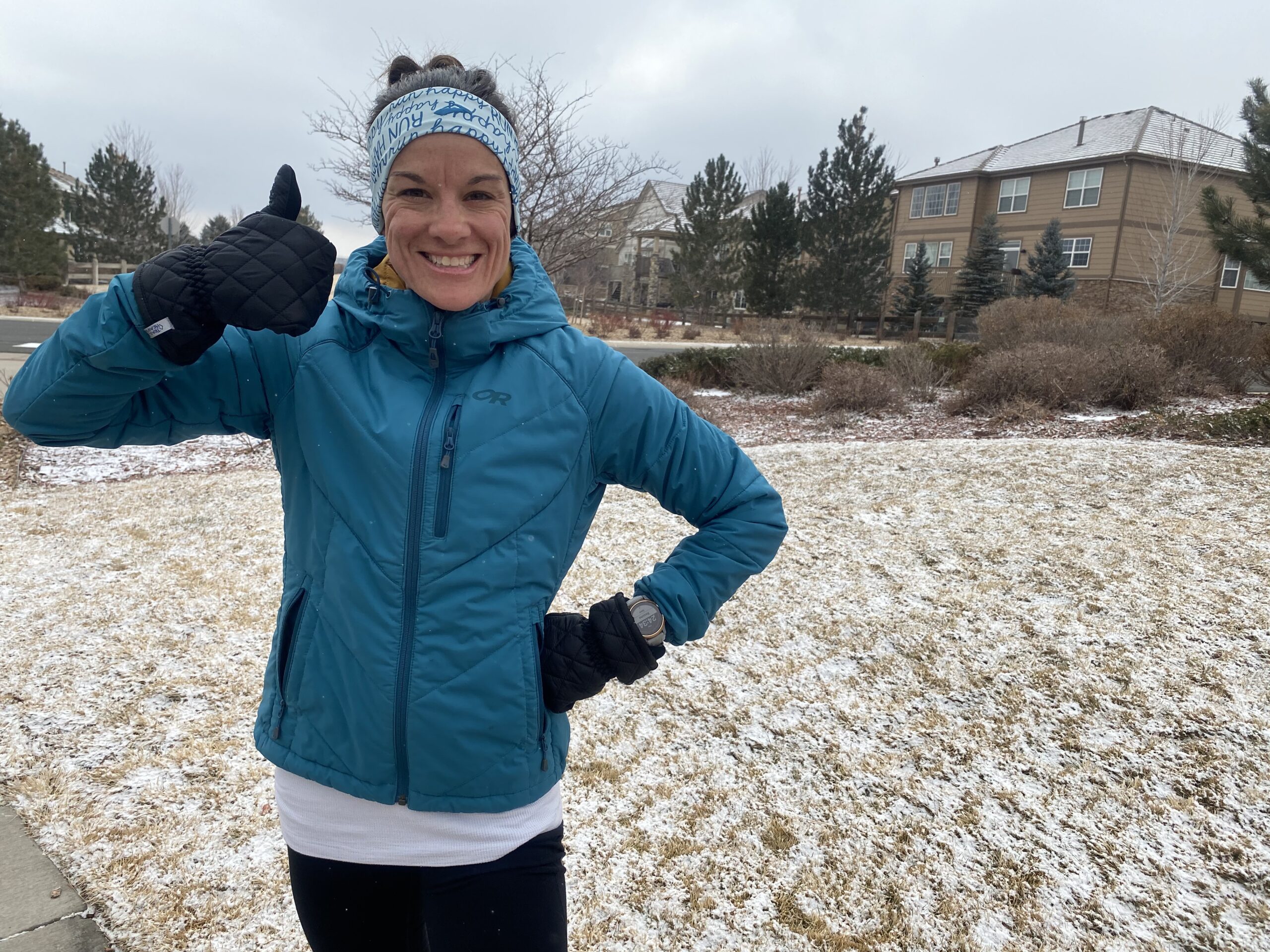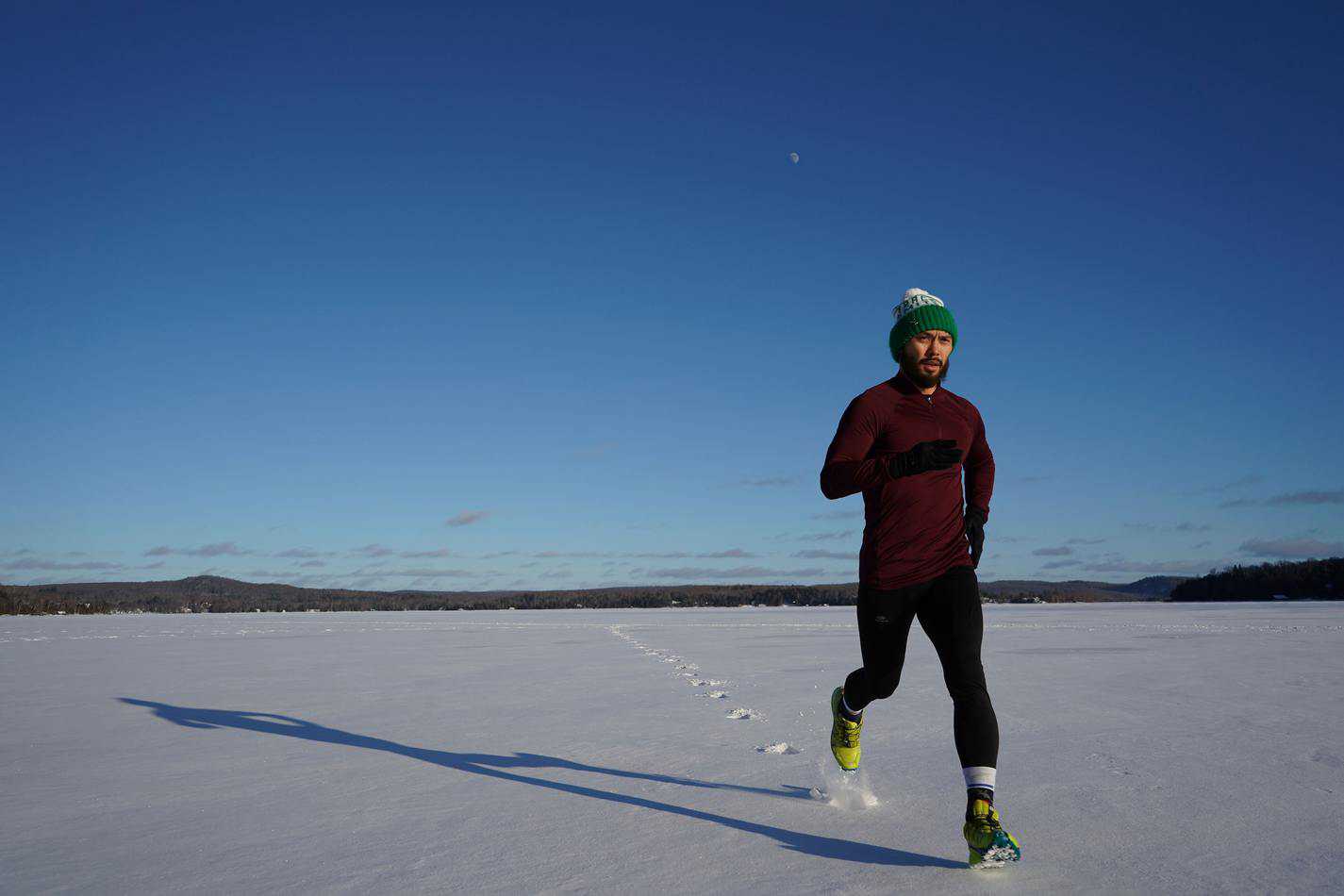I’ve been a member at Orangetheory Fitness (OTF) for about three and a half years. It was recommended to me by a friend, so I took a free trial class. My thoughts were, “I’m just going to do this one class for fun. I’m not going to join…I don’t want to spend the money on it. I can run for free.” Well, I ate my words, because I was instantly hooked. When I started training for a marathon in 2017, Orangetheory had become a huge part of my life. I didn’t want to give it up. I needed to figure out a way to include it in my training to help (not hinder) my marathon goal.
How can Orangetheory Fitness fit into a marathon training program? Orangetheory’s full-body workout is an excellent way to add cross-training to your running mileage. The treadmill portion of the program can also build your speed and endurance as a runner. With proper planning and execution, it fits well into a marathon training plan.
I’m going to get into why OTF works well for marathon runners and how you can incorporate it into your weekly running plan. But to start off, here’s what I love about it:
- It’s fun! (Seriously, though, I love going even though it’s soo hard.)
- It pushes me to my limits!
- Awesome coaches.
- Great music.
- Strength work that I would never do on my own.
- Like-minded people all working toward their fitness goals.
- Challenging athletes at every level!

In 2017 I ran a 3:48 marathon and then a 3:43 in 2018. A few months later, I qualified for the Boston Marathon with a time of 3:36. This summer I’ve trained to go sub 3:35 at the St. George Marathon. Orangetheory has been a part of this marathon journey the entire time.
My studio interviewed me for their Monday or More Life segment and you can watch it here:
What is Orangetheory Fitness?
Most people refer to this popular workout as Orangetheory or OTF. There are over 1,000 locations worldwide, including in all 50 states. Chances are, there’s a studio near you. If you’ve never been, I highly recommend it! Read on to find out what to expect…(if you’re already a member, skip ahead to find out how to include Orangetheory in your marathon training.)
First of all, OTF is for anyone! I think a lot of people are intimidated by it, but they really shouldn’t be. There are people like me who’ve been working out daily for a long time, but there are also people just getting started on their fitness journey. I love being part of a community that offers a fun and challenging workout that’s accessible to anyone. This is because you get to set your own pace and weight.
What do you do there?
Orangetheory is a coach-guided workout developed around heart-rate based interval training. It consists of 3 stations, which they refer to as cardio, rowers, and floor:
Cardio is mostly treadmills, but there are also a few spin bikes for those who prefer cycling. Coaches will guide you into your base pace (easy), push pace (challenging, but doable), and all-out pace (giving it everything you have).
When it’s time to move to the rower, you’ll mostly be rowing, but there are some off the rower exercises included as well.
And the floor is your strength work which includes free weights, Bosu trainers, TRX straps, med balls, and more. I could go into a lot more depth but I want to focus on how this fits into your marathon training. So, if you need more specific info on the workouts themselves – head to their website.
Whether you’re already a member or you’re seeking out extra speed work or crosstraining, Orangetheory can fit well into a marathon training program. Here’s how.
How OTF Fits Into a Marathon Training Program
Here I’ll break down each aspect of Orangetheory Fitness and talk about how it can benefit your marathon training.
Cardio (Treadmills or Spin Bikes)
The treadmill portion of Orangetheory is perfect for:
- getting in extra mileage
- speed work
- hill training
Extra Mileage: As someone who is training for a marathon, you are looking to get in a huge amount of miles each week. Building to a weekly mileage of 40-45 miles per week is about the minimum you can do, with 55+ being even better (read here to find out why). So, utilizing a cross-training workout that involves running, too, is the icing on the cake. That’s the way I see it anyway!
I ALWAYS get to OTF early enough so that I can get on a treadmill to start. This means I can use the first 5 minutes of the class to warm up with some jogging. I can use that towards my weekly mileage, plus running hard without warming up first isn’t good for you.
Speedwork (also called Quality): Since Orangetheory incorporates “all outs” in almost every workout, it’s a great way to get speedwork in. For someone like me who is self-coached and doesn’t currently run with a group, I love how it pushes me.
Yes, I also do some speedwork outside or on a track by myself. But being among a group of people who you know are pushing themselves often allows me to go harder than if I were by myself. A motivating coach reminding you, “Change doesn’t happen without discomfort!” while Imagine Dragon’s “Whatever It Takes” blares in the background definitely helps, too. If you have particular paces you’re shooting for during your speedwork, you can easily set the treadmill at that pace during your “pushes” and “all outs”.
Example: Need to do 800s at 10k pace and 400s at 5k pace? It doesn’t perfectly align, obviously, but let’s say you’re doing 3 minutes of push pace and 1 minute of all-out pace. Your 3 minutes can be done at your 10k pace and your 1 minute all out will be done at your 5k pace (and maybe even faster those last 15 seconds.)
One caution I have, however, is to not overdo speedwork. If you’re already doing a long run, and a medium long run, doing speedwork at Orangetheory twice per week could be too much. Once per week is perfect for me.
Hill Training: If you live somewhere very flat, getting on a treadmill at least once per week to get some incline into your training will help you a lot. The hard part about Orangetheory is that they don’t post the daily workout, so you won’t necessarily know when you might be doing hills. HOWEVER, you can pretty much always find the daily workout posted on this Reddit thread. But guess what? Even if it’s not a “hill” day at OTF, you can always move that sucker up. If you need hill work, set your incline to at least 3-5% for the duration of your treadmill portion. (You can always dial it back to 1% for a break during base pace if needed.)
Bike Option: If you want to go to Orangetheory on a cross-training day when you don’t plan to run, there are a few bikes available, too. This is an excellent way to get in a good cardio workout in place of running. Definitely utilize this option, too, if you’re nursing a running injury.
Rowers
I had never been on a rower until I came to Orangetheory. I had no idea what I was doing. Lucky for me, most of the coaches are awesome, so with their guidance, I got the hang of it pretty quickly. Rowing is excellent cross-training for marathon runners. Just the other day I saw elite distance runner Kara Goucher on Instagram using her rower.
Rowing is great cross-training for the following reasons:
- It’s a full-body workout that requires both your arms and legs to complete a full rowing stroke.
- You can still work your legs while giving them a break from all the pounding that running requires.
- It’s a great complementary aerobic exercise to running that also strengthens your heart and lungs.
- Improves flexibility in your legs.
- Suffering from a running injury? Rowing can be a great substitute during recovery (check with your doctor first and let your OTF coach know.)
Weightroom (Floor)
This is probably the number one reason Orangetheory is great for runners. Marathon runners, especially, are lacking in the strength department. We spend so much of our lives running that strength work gets pushed to the side. But you need it! Runners Blueprint gives a great overview of why strength training is so important for endurance runners. (Hint: It will make you faster and reduce risk of injury!)
I’m pretty good at doing push-ups and pull-ups at home, but other than that, I’m terrible about going to the gym to lift weights. Even bodyweight exercises like squats and core work are things I just don’t ever feel like doing. Enter Orangetheory and they tell me exactly what to do! Because of the variety of equipment available at Orangetheory as well as a coach available to monitor your form, this is the perfect place to get your strength work in.

Don’t you use heart-rate monitors at Orangetheory?
Orangetheory is built around a heart-rate based system. For at least the first year, I religiously wore my heart-rate monitor (purchased through OTF). Because the Orangetheory workout is based around heart-rate interval training, most members wear theirs. This is the breakdown of the five different heart-rate zones you’ll see monitored:
- Gray zone: 50-60 percent of your maximum heart-rate. Little to no exertion.
- Blue zone: 61-70 percent of your maximum heart-rate. Warming up will get you here.
- Green zone: 71-83 percent of your maximum heart-rate. You should be in this zone for 25 to 35 minutes and is where your heart rate will fall to during active recovery.
- Orange zone: 84-91 percent of your maximum heart-rate. This is when your heart is pumping and you are pushing your self. You want to be in this zone for a minimum of 12 minutes and 20-25 minutes is even better.
- Red zone: 92-100 percent of your maximum heart-rate. This will get very uncomfortable and works your anaerobic system.
I think this kind of heart-rate training is great for people who may have a harder time pushing themselves in a workout or just don’t really know what that feels like. As a runner, you could likely pinpoint which zone you’re in without a monitor telling you. I never have a problem pushing myself to the orange zone and I like to stay there as long as possible. However, if you’re doing specific speed work, it’s actually good to move down to the green zone to recover between sets.
Though I don’t think the heart-rate portion of OTF is necessary for marathon training, it can be. Some people love heart-rate training for marathon training and if that’s your or your running coach’s desire, OT would be a great cross-training workout to incorporate since that component is already built-in.
In the past, you’ve had to buy an OTF specific heart rate monitor to use in conjunction with their systems. But they’ve now made a clip, the OTBeat Link, a device that clips to your Apple Watch. Super cool!
I feel like I’m pretty in tune with which zone I’m performing at both at OTF and when I’m running. People who have a more difficult time with this would be well off utilizing a heart-rate monitor.
Determining How Often You Should Go to OTF During Training
The hardest part of including OTF into your marathon training is knowing what day or days of the week is best to go.
This is my recommendation:
| Sunday | Monday | Tuesday | Wednesday | Thursday | Friday | Saturday |
|---|---|---|---|---|---|---|
| Long Run | Recovery Run and Cross-Training at Orangetheory | Rest | Medium Long Run with Tempo Work | Speed Work with Orangetheory | Easy Run | Threshold Run |
| Use the bike or run easy on the treadmill (no pushes or all outs!) | Run before class to warm up properly and to increase mileage. |
If you like to do your long runs on Saturdays, adjust accordingly. I like to go to OTF twice per week between training cycles and continue that through my first month of training. I then reduce it to one day per week as my marathon draws closer. I think both can work well – I just get a little afraid of getting sore or injured during my last couple of months before my marathon by going to hard, too often. But then I’m losing out on the strength work which is extremely beneficial. If you do choose to go two days a week, it might be wise to skip the treadmill one of those days or just keep it easy.
I always run before I go to Orangetheory. I need to do this to get in enough miles during the week. It’s also really important to warm up before getting into your speed work and the 5 minutes you’ll get at OTF really isn’t enough. This is actually my preference:
Run to Orangetheory (1.5 miles warmup, 1 mile that includes speedwork) —> 1 hour at Orangetheory (to include 2-3.5 miles of running) –> Run home from Orangetheory (2.5 miles cooldown)
You’ll find what works best for you, but if you’re looking to get 50+ miles per week in marathon training, you’re probably going to have to run some before or after.
Knowing When to Do Your Own Thing at Orangetheory
Although Orangetheory is a prescribed workout, you don’t have to follow every single thing to a T. I don’t think you should stray too much from the workout (because it’s almost always awesome!) but as a marathon runner, you need it to fit into your goals.
There have been days that I want to go to Orangetheory, but I’m supposed to be doing an easy paced run. That’s when you get on the treadmill and just do your thing. Even when everyone else is doing push paces and all outs, you can just leave your treadmill at your easy pace. As a competitive person, this is VERY hard for me and may be for you, too. Just try to enjoy yourself and know that it’s the best thing for your body and training on that day. Remember that 75-80% of your running should be done at an easy pace (as I wrote about here) so keep that in consideration as you plan your week while including your Orangetheory workouts.
I Recommend Orangetheory for Marathon Runners
Because of its ability to increase a runner’s strength, give them an extra opportunity for miles during the week, and also add in cross-training elements, I think Orangetheory is the perfect complementary workout to marathon training. I can confidently say that its made me a stronger runner and had a hand in helping me achieve my goal of qualifying for the Boston marathon. Among an abundance of solitary miles outside or on my treadmill at home, it’s something I look forward to every week!
Check out my favorite gear for Orangetheory:
I love any inexpensive shirt that has cute detail on the back (different than what I’d wear for an outdoor run which would be more like this) along with long moisture-wicking leggings. I have a new favorite running sock (these unisex ones from Rockay) and of course, I never run or do a workout without my Altras! I’m also super picky about my water bottles and I love my Thermoflask one.
My husband wears the Altra Solstice and loves workout gear from Lululemon or Nike.
(Photo credit of featured image: Maddie4753 – Creative Commons)
*As an Amazon Associate, I earn from qualifying purchases.







